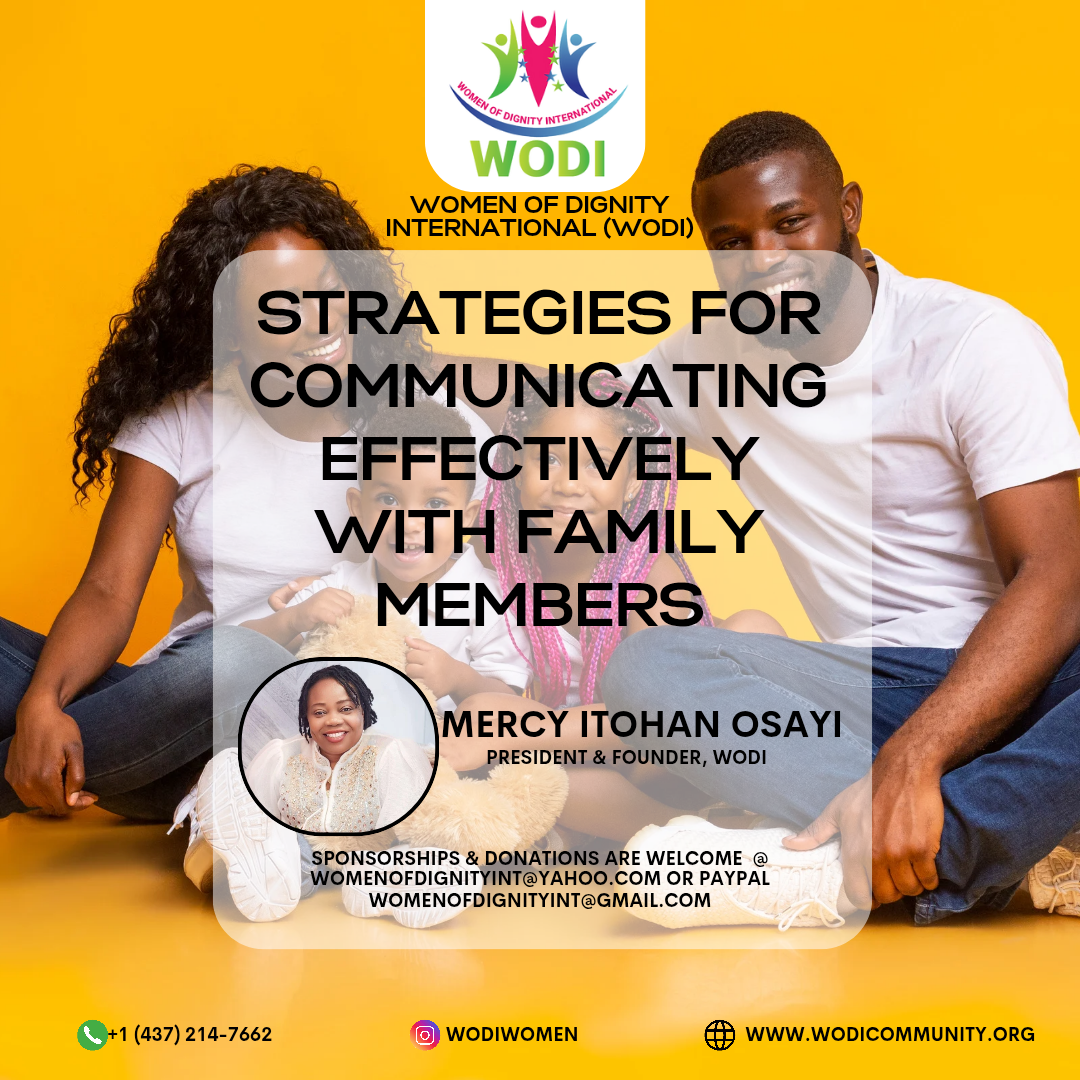Strategies for Communicating Effectively With Family Members

Strategies for Communicating Effectively With Family Members
Effective communication is the cornerstone of any healthy relationship, and this is especially true within families. Our loved ones are often the most important people in our lives, yet communicating with them can sometimes feel challenging. Different personalities, generational gaps, and emotional histories can complicate conversations. However, with a few thoughtful strategies, you can enhance your communication with family members, fostering deeper connections and understanding.
1. Practice Active Listening
One of the most powerful tools in effective communication is active listening. This means not just hearing the words being spoken but truly engaging with the speaker. Show your family members that you value what they have to say by giving them your full attention. Make eye contact, nod in acknowledgment, and refrain from interrupting. When they finish speaking, paraphrase what you heard to confirm your understanding. This simple act can make them feel heard and appreciated.
2. Be Open and Honest
Transparency is vital in family communication. Share your thoughts and feelings openly, even if they are difficult to express. Honesty fosters trust, and when family members feel they can speak their minds without judgment, it creates a safe space for dialogue. Encourage others to share their perspectives as well, and approach sensitive topics with empathy and care.
3. Choose the Right Time and Place
Timing can significantly impact the effectiveness of a conversation. Avoid bringing up sensitive subjects during stressful moments or when emotions are running high. Instead, choose a calm environment where everyone feels comfortable. This could be during a family meal or a casual gathering. Creating a relaxed atmosphere can lead to more productive discussions.
4. Use “I” Statements
When discussing feelings or concerns, frame your thoughts using “I” statements rather than “you” statements. For example, instead of saying “You never listen to me,” try “I feel unheard when I’m interrupted.” This approach reduces defensiveness and encourages open dialogue. It allows family members to understand your perspective without feeling attacked.
5. Be Mindful of Non-Verbal Communication
Communication isn't just about words; non-verbal cues play a significant role as well. Pay attention to your body language, facial expressions, and tone of voice. Ensure that these non-verbal signals align with your message. A warm smile or an open posture can convey warmth and acceptance, while crossed arms or a tense tone might suggest defensiveness or anger.
6. Encourage Family Meetings
Regular family meetings can be an effective way to foster open communication. These gatherings provide a structured opportunity for everyone to share their thoughts and feelings about various topics—be it planning a family event or discussing household responsibilities. Establishing a routine can help normalize discussions and make it easier for family members to express themselves.
7. Practice Empathy
Understanding where your family members are coming from is crucial for effective communication. Try to put yourself in their shoes and consider their feelings and experiences. Empathy allows you to respond more compassionately and can diffuse potential conflicts before they escalate.
8. Be Patient and Forgiving
Family dynamics can be complex, and misunderstandings are bound to happen. Approach conversations with patience and a willingness to forgive. If someone misinterprets your words or reacts defensively, take a step back and try to understand their perspective before responding. Cultivating an atmosphere of forgiveness encourages openness and strengthens bonds.
9. Seek Professional Help if Needed
Sometimes, family communication issues can be deeply rooted or particularly challenging to navigate alone. In such cases, seeking the help of a family therapist or counselor can provide valuable insights and strategies tailored to your specific situation. Professional guidance can facilitate healthier communication patterns and help resolve longstanding conflicts.
Conclusion
Effective communication with family members is an ongoing journey that requires effort, understanding, and commitment. By practicing active listening, being open and honest, and employing other thoughtful strategies, you can create an environment where everyone feels valued and understood. Remember, the goal is not just to communicate but to connect—because at the heart of every family is the desire for love, support, and belonging.
